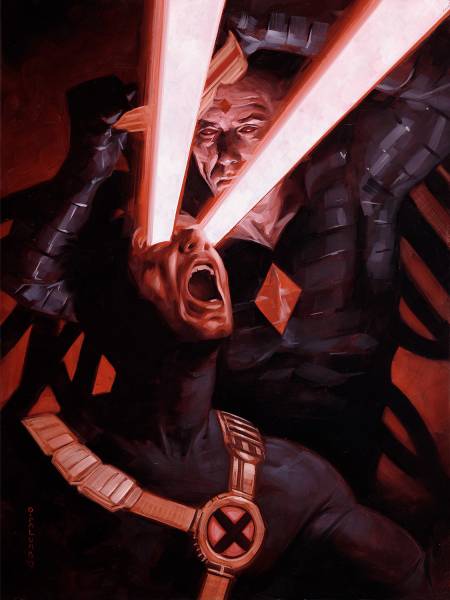
Cyclops vs Mr Sinister, Marvel Masterpieces 2020 (1 of 135 pieces), 12×16 inches, oil on panel, 2020
I couldn’t tell you why, but my schedule this past year has been wall to wall illustrated book projects. This is following two years painting for Marvel Masterpieces and, in the decade prior to that, roughly a dozen other illustrated novels, a few mini runs of monthly comic covers, and a handfull of gallery shows. When I sit down to write a Muddy Colors piece, I begin by reflecting on what’s most pressing on my mind lately. So no surprise, keeping organized for long commitment projects is something I’ve been having some thoughts on.
Client work
One thing that strikes me immediately is that managing a painting series on commission is very different from one that is personally directed. I’m currently doing both. Each has its advantages and disadvantages. The benefits I see in a client driven series:
You have some built in structure to guide you
Up front, you will know the number of pieces needed, the dimensions of those pieces, and the subject matter. Sometimes the subject is fairly open, sometimes fairly specific, but there is always some kind of story or narrative or framework to build within. This is massively helpful in planning your time and tracking your progress.
You have some reliable income to sustain you
I highly recommend negotiating a pay structure that will take care of you along the way. One approach I use is 33% on signing the contract, 33% on sketch delivery, 33% on final approval. This is how I tend to structure illustrated books. Or, break the series into pieces and bill for every x number of pieces. This was how I structured Marvel Masterpieces. This way you aren’t relying on your savings for an extended period of time as these projects can take months or even years to complete.
Personal work
My experience here has been creating gallery shows and publishing art books of personal work, including one I’m in progress on. It can be tricky to direct yourself over a long stretch of time, in large part because you don’t have the structure and financial support of the client directed projects. This means finding ways to carve out time and working to establish your own scope of the project and thematic boundaries. Personal project have some very attractive benefits however:
Full creative control, full ownership
I suspect this is what draws most people to an ambitious personal series, and doubt I need to say much about it. There’s obviously a great appeal, and potentially a good financial future, in creating your own thing and owning it outright. I should note my own efforts have not been aimed at big financial success (Hollywood money, blue chip galleries, etc), but they have rounded out a diversified income which helped compensate for lean illustration years.
Defining yourself
As illustrators, our path is somewhat directed by others. We develop our voices and this shapes the type of work we’re offered, but relying on client assignments can limit how much of our voice we’re able to express or even explore. Long term personal series have been far and away the most important practice in my career for pushing myself forward and creating work that would stand out and help others understand my flavor.
Practical tips for client jobs
Planning ahead
The key to staying on top of your workload for a sprawling project is planning for efficiency. This might look different depending on the project, but all projects run smoothest with a clear idea of what needs to be done and a procedure to get there. I find this also helps to avoid feeling overwhelmed. The enormity of a huge project can be paralyzing, but every body of work is just a collection of individual pieces. So if you can finish one piece, you can finish a large group.

Interior for Those Across the River by Christopher Buehlman (1 of 4 pieces), 12×18 inches, oil on panel, 2021
This suggests to just keep your focus on one piece at a time, but I don’t find that always efficient. Not at first anyhow. My first move to to define the pieces. If I’m illustrating a book and they want a cover and 10 interiors, I’ll begin by breaking down the potential scenes and getting the client to agree with this plan. From there, I start doing thumbnails and try to keep the group in mind so that all pieces complement each other and are true to the source material. When I have a basic blueprint established, I’ll start working with models and developing proper sketches. Only once I’ve had sketches approved, in groups or as one big group, will I begin treating the paintings as individual efforts.
This suits me personally because it reflects my process for just about any creative task: start narrowing down ideas and possibilities until I have the intended outcome pretty clearly defined, and then go to work executing it.
Map it out
I recommend some kind of visual progress chart. This helps me to make sure I’m keeping pace, it rewards me when I see that I’m advancing, and it soothes my anxiety when it suddenly feels like I’ve lost track of everything. Each person will be different in how this chart unfolds. I’d imagine that many would work best with mini deadlines along the way, keeping a steady pace. I know my own process to require a lot of work for preliminaries but a relatively fast pace for finals. Because of this, I’m more concerned with locking down my sketches that keeping pace with finals. Knowing your own habits is what matters. The thing that you don’t want is to get caught up in other tasks and then one day realize you have 6 weeks to do the whole book. Been there, and I don’t recommend it.
Batch shoot reference
If you have sketches all worked out as a group, you can also plan model shoots much more efficiently. Instead of having someone come back several times for multiple piece, figure out everything you’ll need from that model and get it all done in one session.
Focus
If you have other work competing with the long term project for your attention, there may be times when you need to concentrate and shut the other stuff out. There was a point last year where I was painting one book, reading/sketching another, and had three more that I had not read yet. I never wanted to read the next book if I had not finished sketches for the one before it. Changing gears takes away momentum, and so my time was best spent by completing all of one phase (sketching/finals) of one group before beginning it with the next group. I could only start reading the next book once my sketches for the previous one were finished because that’s when creative choices were largely locked down. Similarly, I would sometimes push one-off jobs together and work on them while taking a break from a book. Not that it needs to be this way, but I found it makes everything easier and less stressful.
Practical tips for personal projects
Give yourself some structure
That all works for client driven projects, but it’s a bit different for personal projects. In that case, I’ll try to do something similar but also know that I can not and should not have all the answers up front. Personal projects should allow room to explore, expand, and also to fail and try again. If I have a gallery show on the horizon, I might start with a theme to build from. I will try to plan a minimum of pieces and probably break those into groups along the lines of star pieces and supporting pieces. For example, I might plan 3 large works, 6-10 mid-sized works, and 10-20 small works. Sub-groups help me focus when I don’t know the full shape of the thing. It’s all adjustable as it takes shape.
Block out time, but accept that sometimes it will have to wait
If a personal project has no hard deadline, I will try to always keep something in progress so that it doesn’t get pushed out. If deadlines demand that it does have to get put on hold, that’s fine. Sometime a break gives you a chance to reflect and come in with a new perspective. My current project went on hiatus for a few years while I was doing Masterpieces and then these recent book jobs. I am back into it now and have clearer ideas of where it’s going and what it needs.
I have had some personal projects lose steam because my interest just didn’t last. This can feel deflating if you had to pause something and, when you’re able to dive back in, the passion is missing. This is the nature of growth though, and it should be recognized as your tastes and ideas evolving. I would not recommend brute forcing a project that you’ve lost interest in simply because of time invested. If you can’t find an angle to to recapture the spark, it’s time to let it go and begin something new.


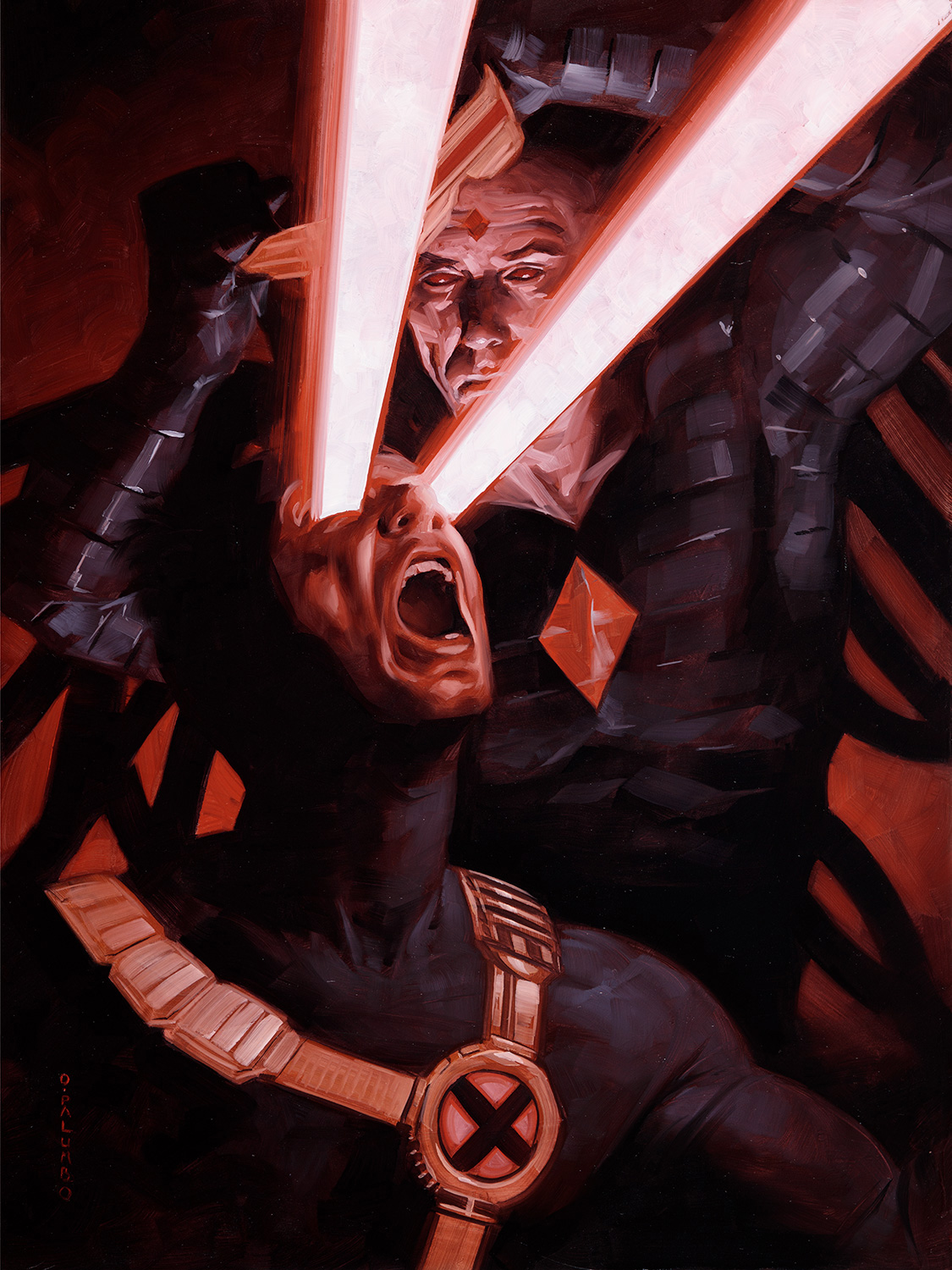

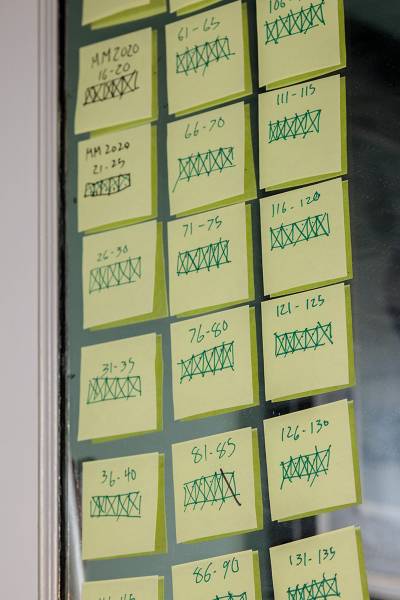
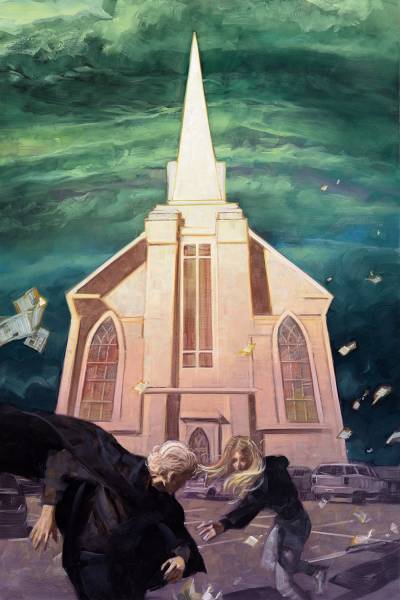
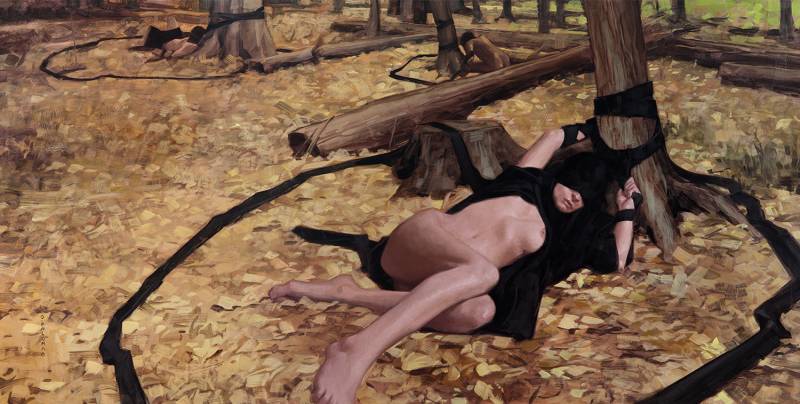

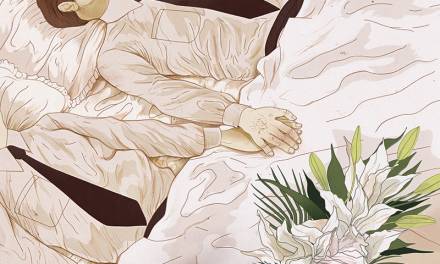
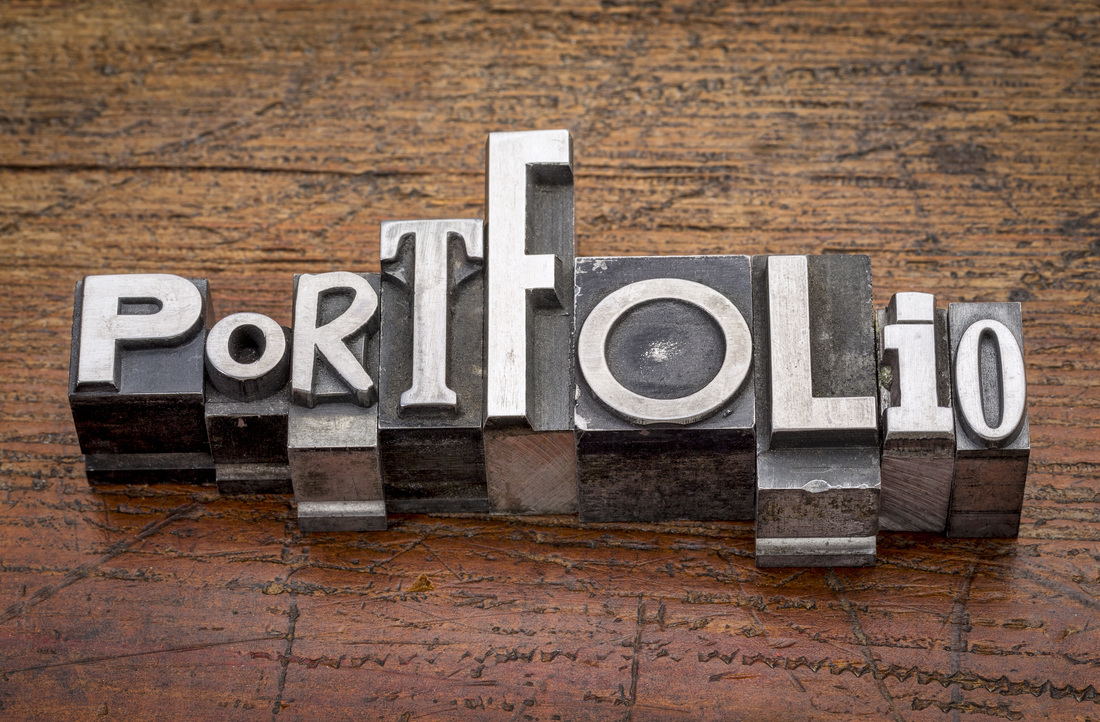

this is great.
tanks Palumbo
Terrific advice. Helps me too!